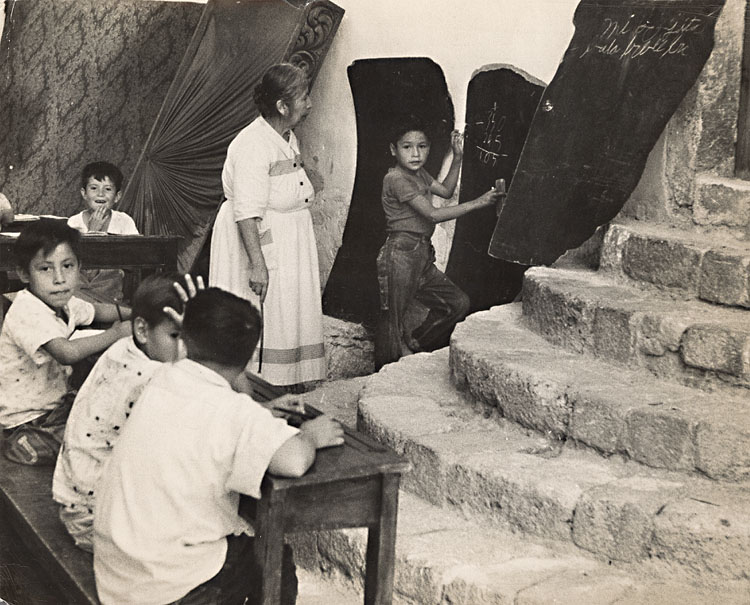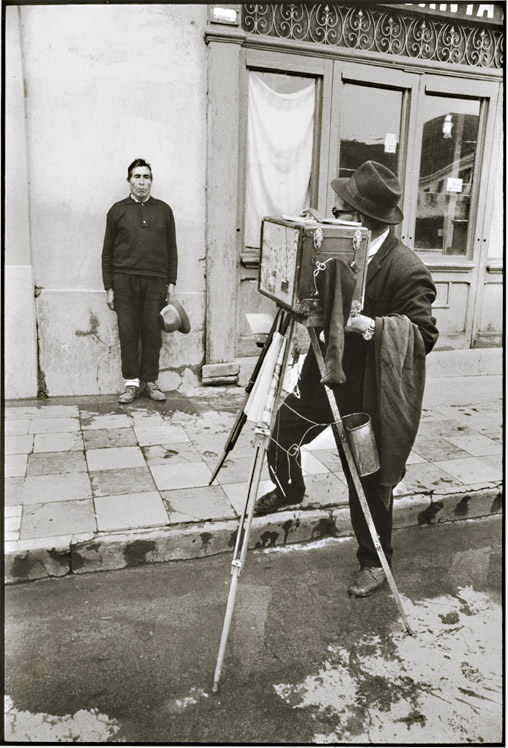
W. VanKirk Buchanan--The Ancient Art of Brick Making, Mexico City, Mexico
More than anything, Mexico is its people--stewards and survivors of a harsh, sun-raked land who energize their desert with unmistakeable culture and character. The majority of images in this exhibit reflect exactly that, for they mainly depict a people of the sun, captured in rich, contrasting studies of light and shade, in dramatic silhouette, and in the full glare of the day. The Mexico of these photos is a crucible in which the young, the old, the well-possessed and the poor enact an unselfconscious theater of daily life, challenged and ennobled by the simple imperatives of living.
This is most evident in the photos of Pierre Verger. The Paris-born Verger (1902-1966) was as great an ethnographer as he was a photographer, having devoted most of his life to the study of Third World culture, the African Diaspora and the disappearing civilizations of Earth's far corners. In the 1930s, among many such destinations, he visited Mexico, chronicling its humanity in a series of superb, candid portraits that express the joy and struggle of Mexican life as few photographers have done.
In their luminous black and white, Verger's images get all the color of Mexico--the children of Oaxaca at play in their traditional garb, the old potters of Oaxaca, as weathered as their clay, the tribal dancers of Huachinango, the men mending hats or the women selling tortillas, all taking the shade as they labor cheerfully. Verger's Mexico is less a land of poverty and pathos than a world of work and carefully conserved energy--an energy that flares in the smiles of youth or the animated expressions of blind musicians singing and strumming in the open air.
In Verger's and most of the other photos of this exhibit, the pure power of available-light photography delineates and defines the Mexican landscape as something post-Eden, naked in the eyes of God, and marked for redemption. The children in the thatch-roofed shade of a Yucatan schoolhouse, the cowboys herding ponies in Guadalajara, or the oxcart drivers fording a river under a magnificent dusky sky in Fritz Henle's heroic 1960s photo are all figures of hope and forward motion. At the same time, there is innocence and repose in Henle's almost biblical depiction of a boy with a baby lamb, and there is the scruffy indolence of youth in a Merida pool hall in Carl Frank's photo, one of the few indoor shots here.
Of course, in Flor Gardino's 2006 series--"The Sonnets of Shakespeare"--voluptuous female nudes are posed mysteriously with great organic props. These studio productions by one of Mexico's leading artists explore the sensual and the sublime on their own terms, via searing platinum prints and a metaphysical formalism that connects no less to the Mexican earth than do the naturalistic photos elsewhere in this exhibit. Gardino reminds us that as real as it may be beneath the sun, Mexico is also very much a state of mind.
Exhibited and Sold By
Contemporary Works / Vintage Works, Ltd.
258 Inverness Circle
Chalfont, Pennsylvania 18914 USA
Contact Alex Novak and Marthe Smith
Email info@vintageworks.net
Phone +1-215-518-6962
Call for an Appointment











Share This